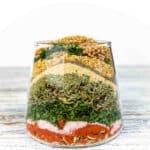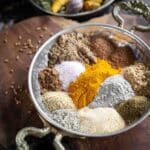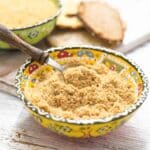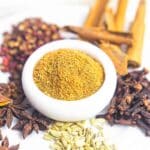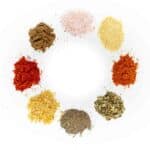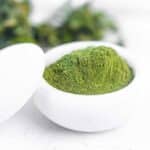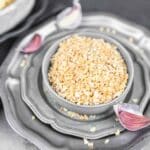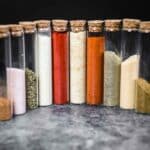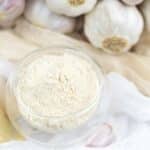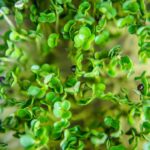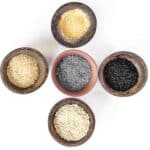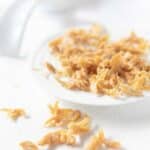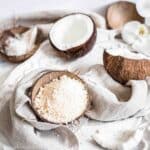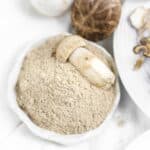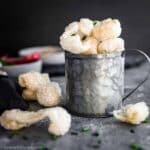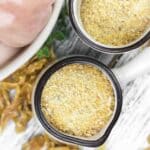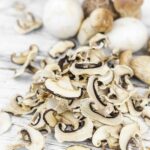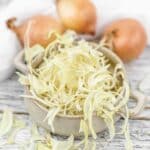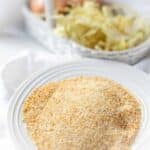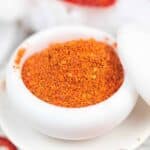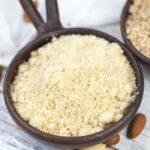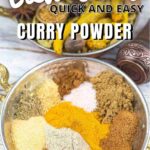Make our Substitute for Curry Powder Recipe that gives you a perfectly tailored mix of 12 flavorful fresh spices. Instead of using store bought curry powder, substitute it with your blend for cooking all your delicious Indian meals.
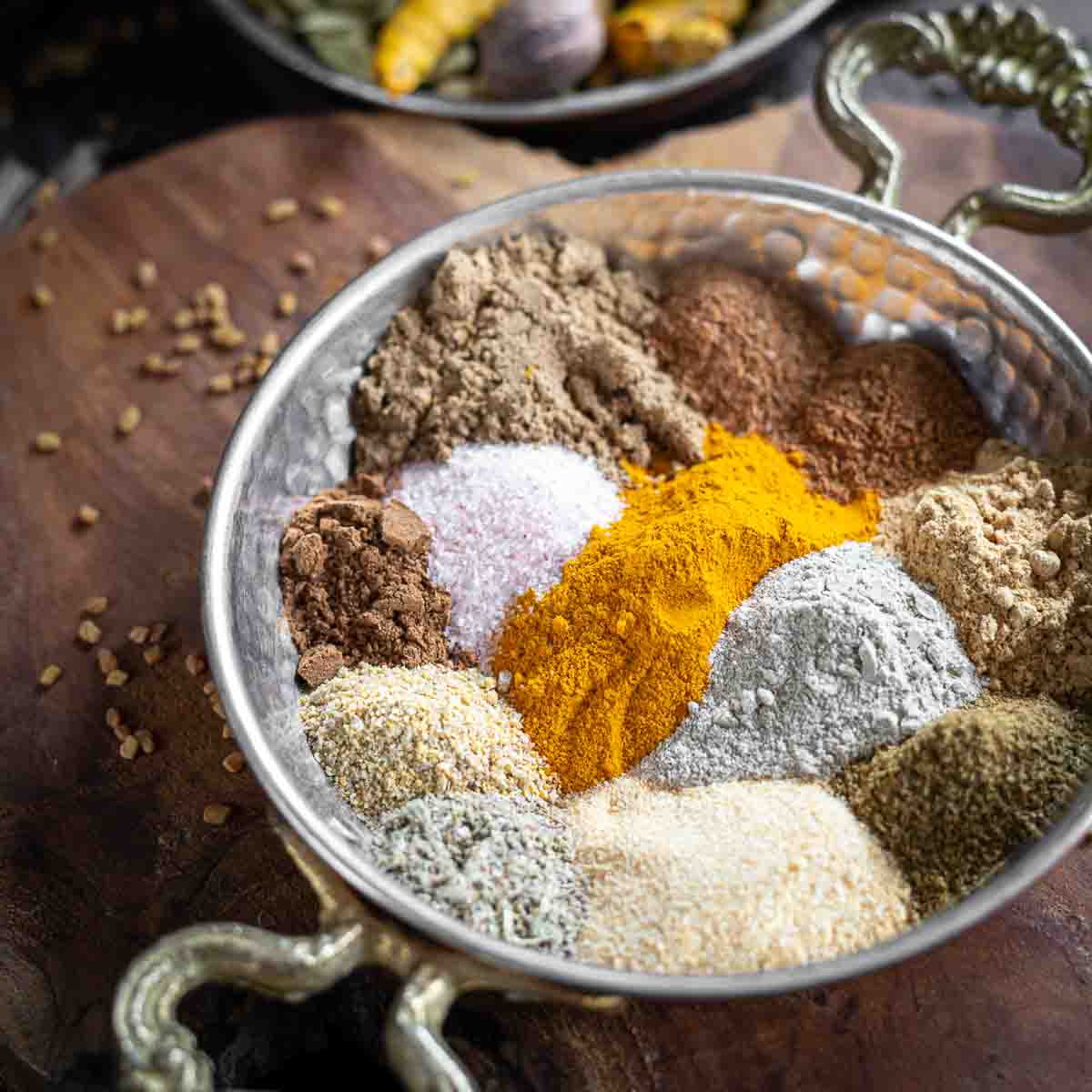
Use it to make the best-ever Indian chicken curry you have wanted to make for so long.
Creating your powder blend is the quickest way to substitute curry powder if unavailable.

Homemade Seasonings
Making your seasoning blends is a crucial aspect of homemade cooking.
Blending your spices not only gives you the freshest of the fresh ingredients, but you will have an assurance that no other ingredients are involved. Many store-bought spice mixes contain additions to prevent the blend from molding, which is not needed if stored properly.
One important point is also the price. It is much cheaper to make your blends than the little jars you buy in the stores. And you make your diy curry powder or other seasonings in seconds.
Our Everything bagel seasoning is used in our kitchen on almost anything. This mix is so delicious that everyone who tries it will never return to a store-bought.
Sausage seasoning is another great example. Making your sausages using spices you blend yourself gives you the advantage of the flavors you have always wanted.
And taco seasoning together with enchilada blend on the other site will flavor all of the Mexican dishes you are about to make.
For some Asian flavors, our Chinese five spice powder is just perfect addition.
What is Curry Powder?
Traditional curry powder is a blend of spices, including turmeric, coriander, cumin, fenugreek, and chili peppers. It is used to give Indian dishes their distinctive flavor and can be used in many different types of cooking. Store-bought curry spice powder is available in mild, medium, or hot varieties, depending on your preference.
Origin of Curry Powder
Curry powder blends spices that originated in the Indian subcontinent. It has been used for centuries in India and other parts of Asia to flavor tasty curry dishes such as traditional Indian curries or chickpea curry recipes.
The precise recipe for curry powder varies by region and culture but traditionally includes some combination of our spices. The spice blend has been popularized worldwide due to its unique flavor and versatility. Curry powder is also used as a dry rub on meats before cooking or as an ingredient in soups and curries. Its popularity continues to grow today because it adds depth and complexity to any dish.
Is Curry Powder Indian?
Yes, curry powder is a blend of spices that originated in India.
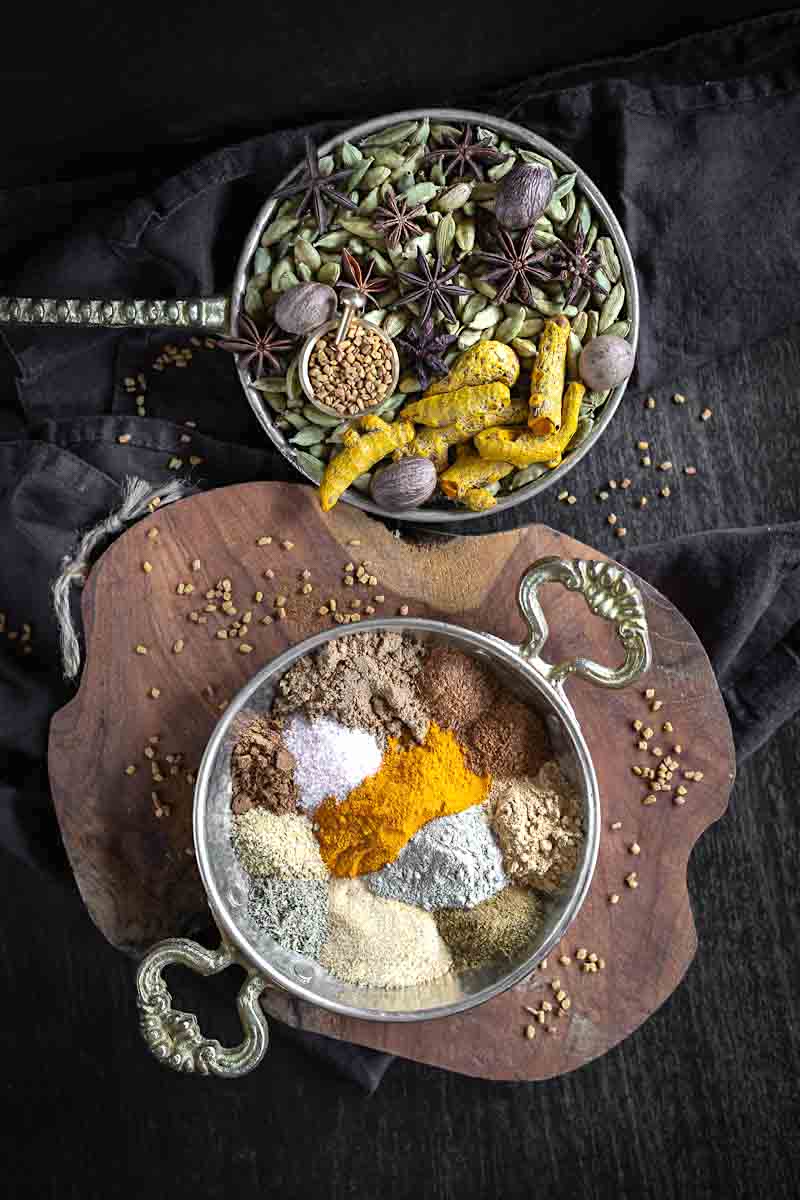
What Is Curry Powder Made Of?
Curry powder is a blend of various spices, including turmeric, cumin, coriander, ginger, and sometimes cardamon. Depending on the recipe, other ingredients may be added, such as cinnamon, cardamom, clove, nutmeg, black pepper, garlic powder, and onion powder.
Curry powder comes in wide different varieties to suit various tastes and cuisines. The most popular type of curry powder is Madras curry powder which originated in India and contains more chilli powder than other types of standard curry powders. Other types use garam masala or chaat masala, which has a more fragrant aroma due to adding cardamom or cloves.
What Makes Curry Powder Yellow?
Curry powder has a lot of spices that often give Indian dishes their signature yellow color.
Turmeric is the spice most responsible for its bright yellow color, and it’s also known for its anti-inflammatory properties. The other spices in curry powder bring a variety of flavors to the dish. Other ingredients like onion powder, garlic powder, and ginger may be added depending on the recipe to give a more complex flavor profile. Some curry powders are hotter than others due to adding chili pepper or other hot spices.
What Does Curry Powder Taste Like?
Curry powder has a complex flavor that can vary depending on its blend of spices. Curry powder is typically warm, earthy, and slightly spicy in taste. It will also have hints of sweetness, nuttiness, and citrus.
What Spices Are Used in Replacement for Curry Powder?
Some curry powder substitutions spices include turmeric, cumin, coriander, fenugreek, ginger, mustard seed, paprika, cinnamon, cardamom, black pepper, and cloves.
Best Curry Powder Substitutes
Turmeric Powder
Ground turmeric powder is a common spice made from the dried root of the turmeric plant. It has a deep yellow-orange color and an earthy, slightly bitter flavor. Used in Indian and Southeast Asian cooking, it is also a key ingredient in many curries, sauces, and marinades. Ground turmeric powder can also be used to make tea or added to smoothies for extra flavor and health benefits.
Ground Cumin
Cumin is a type of dried seed from the Cuminum cyminum plant, which is part of the parsley family. Ground cumin is one of the most common spices used in cooking, especially in Middle Eastern and Indian cuisine. It has a strong, earthy flavor that adds depth to dishes.
Coriander
Coriander is a spice from the Coriandrum sativum plant, part of the parsley family. This spice has been used in many different cultures for centuries and is known for its distinct flavor and aroma. The coriander plant seeds are usually dried and then ground into a fine powder to use as a seasoning or condiment. Coriander powder has a warm, nutty taste with some citrus notes.
Garlic
Garlic is a type of spice made from the bulbs of Allium sativum, a species in the onion family. It is widely used as a seasoning or flavoring agent in cooking worldwide. Garlic has been used for centuries for its pungent flavor and strong aroma. It can be used raw or cooked, depending on the desired flavor intensity.
Ginger
Ginger spice has been a popular herb used in cooking, medicine, and beauty products for centuries. It is derived from the root of the ginger plant, which is native to tropical parts of Asia and Africa. In cooking, it can be used as a seasoning or flavoring agent in various dishes, ranging from curries to desserts. Its intense flavor adds an earthy warmth and zest to any dish.
Cardamon
Cardamom is a spice made from the seed pods of various plants in the ginger family. It has a strong, pungent flavor and aroma and is used in sweet and savory dishes. Cardamom is widely used in Indian and Middle Eastern cuisines, as well as in Scandinavian baking. It can be purchased ground or as whole pods, which must be cracked open before use.
Nutmeg
Nutmeg is a spice made from the seed of the nutmeg tree. It is used in both sweet and savory dishes. Nutmeg has a warm, slightly sweet flavor and is often used to flavor desserts, puddings, custards, eggnog, and baked goods. It can also be added to savory dishes such as stews, curries, and meatloaf.
Fenugreek
Is a spice used in many Indian and Middle Eastern dishes. It has a strong, sweet, and slightly bitter flavor. The seeds can be roasted or ground into a powder for use in cooking. It is often used to enhance curries, vegetable dishes, and lentils. It can also be used to make tea or as a pickling ingredient.
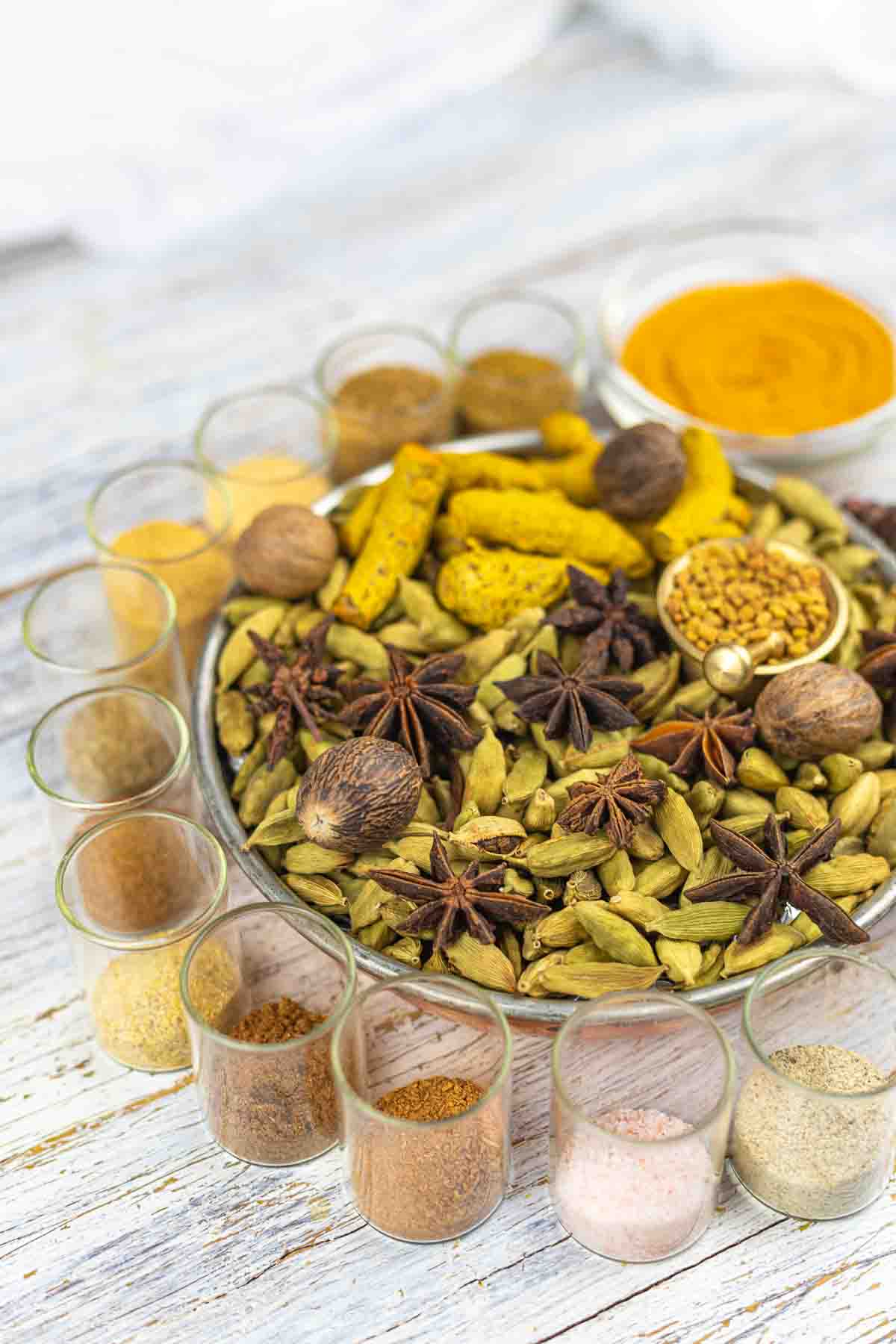
Clove
Ground Clove spice has a strong, pungent flavor and can add warmth and sweetness to dishes. Cloves are often used in curries, stews, marinades, pickles, and baked goods like bread and cakes.
Cinnamon
Cinnamon is a spice made from the inner bark of cinnamon trees. It is used in sweet and savory dishes and can be found in ground or stick form. Cinnamon has a warm, sweet flavor that pairs well with baked goods, fruits, and curries.
Salt
Salt is a mineral composed primarily of sodium chloride, a chemical compound belonging to the larger class of salts. It is used in cooking, baking, and food preservation, as well as for seasoning and flavoring. Salt can also be used to preserve food by preventing spoilage due to bacteria, fungi, or other microorganisms.
Black and White Pepper
Black pepper is a spice made from the dried, unripe fruit of the Piper nigrum plant. White pepper is made from the same fruit but harvested when it’s ripe and treated differently during processing. The flavor of white pepper is milder than black pepper and has a slightly different aroma.
The Ultimate Homemade Curry Powder Recipe
Our curry spice blend is super easy to make and is great substitute for curry powder.
To make your own curry powder, I am going to guide you through all of the ingredients in curry powder you will need.
Kitchen gadgets needed:
- Glass Jar
- Mixing bowl
Ingredients needed:
- Turmeric
- Ground Cumin
- Ground Coriander
- Garlic Powder
- Ground Ginger
- Cardamon
- Nutmeg
- Fenugreek
- Clove
- Cinnamon
- Salt
- Ground black/white pepper
*Exact measurements are listed in the recipe card below.
STEP-BY-STEP INSTRUCTIONS TO MAKE BEST SUBSTITUTE FOR CURRY POWDER
First Step: Prepare ingredients
Prepare all of your spices. It would be best to have them all homegrown and dry and grind by you. But if not, try to get the freshest ingredients and as bio-quality as possible.
If you only use cumin seeds or whole cardamon, those could be ground using your coffee grinder in seconds.
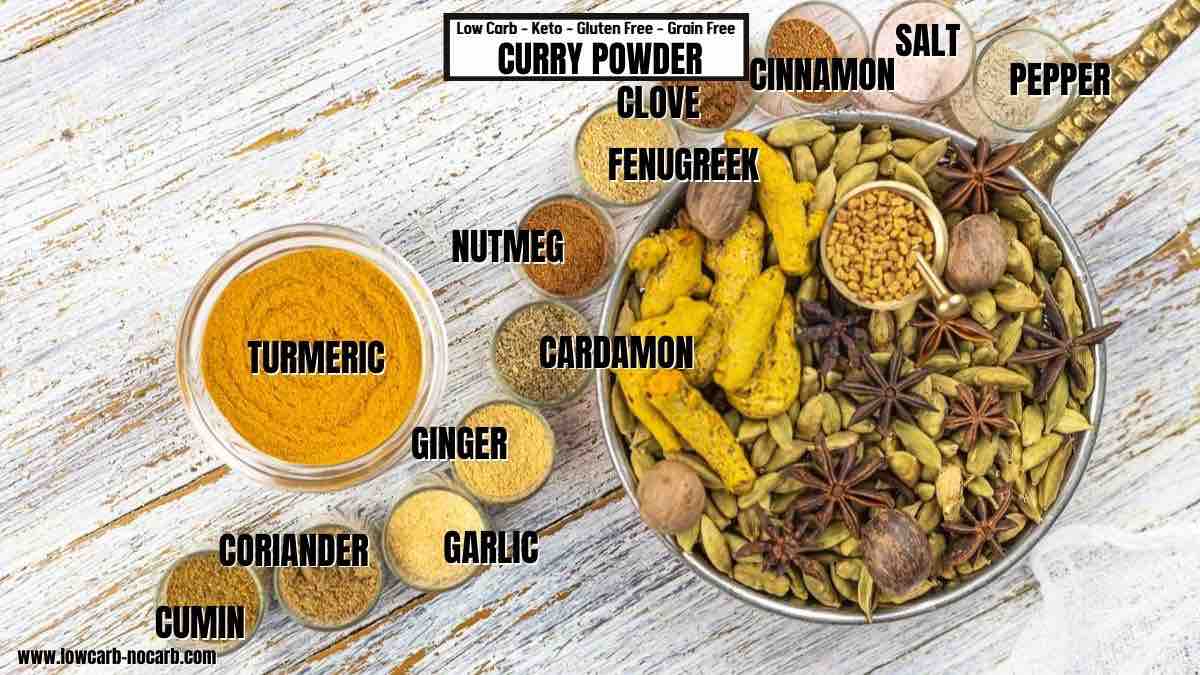
Second Step: Start layering
If you plan to make this as a gift, pick the layering in order of colors. If not, start with turmeric, which is one of the most important and gives you that beautiful color to the whole blend.
Follow with garlic, ground cumin, and coriander.
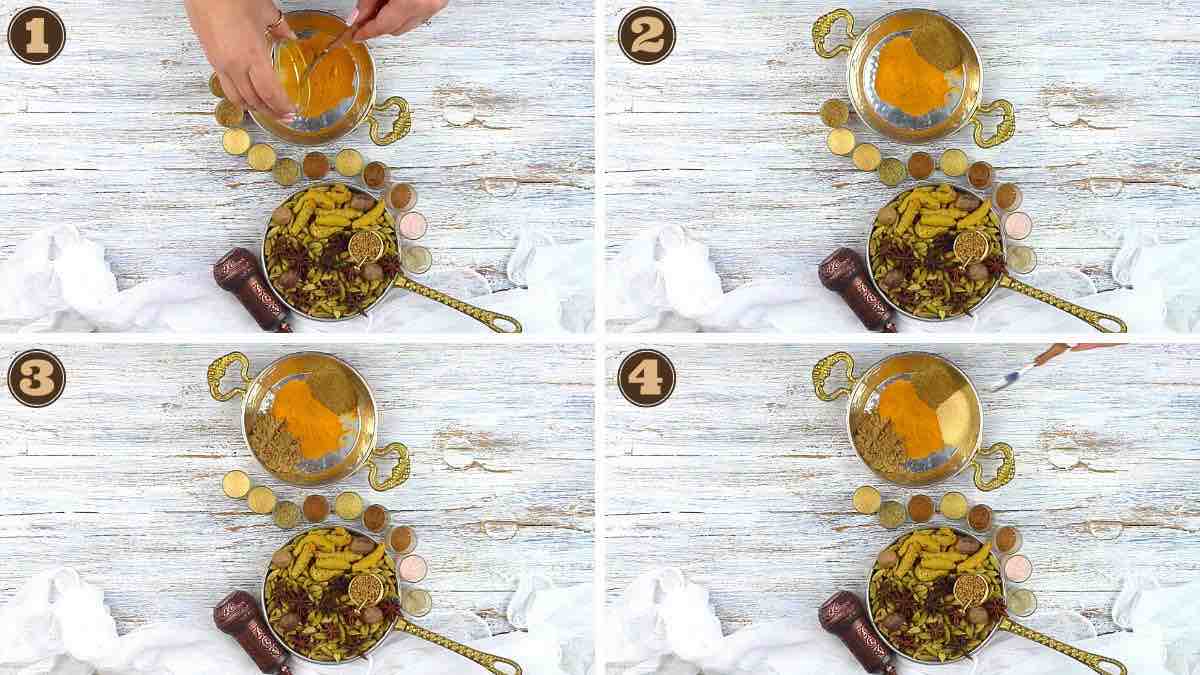
Third Step: Ginger to Fenugreek
Continue with ginger, cardamom, nutmeg, and fenugreek.
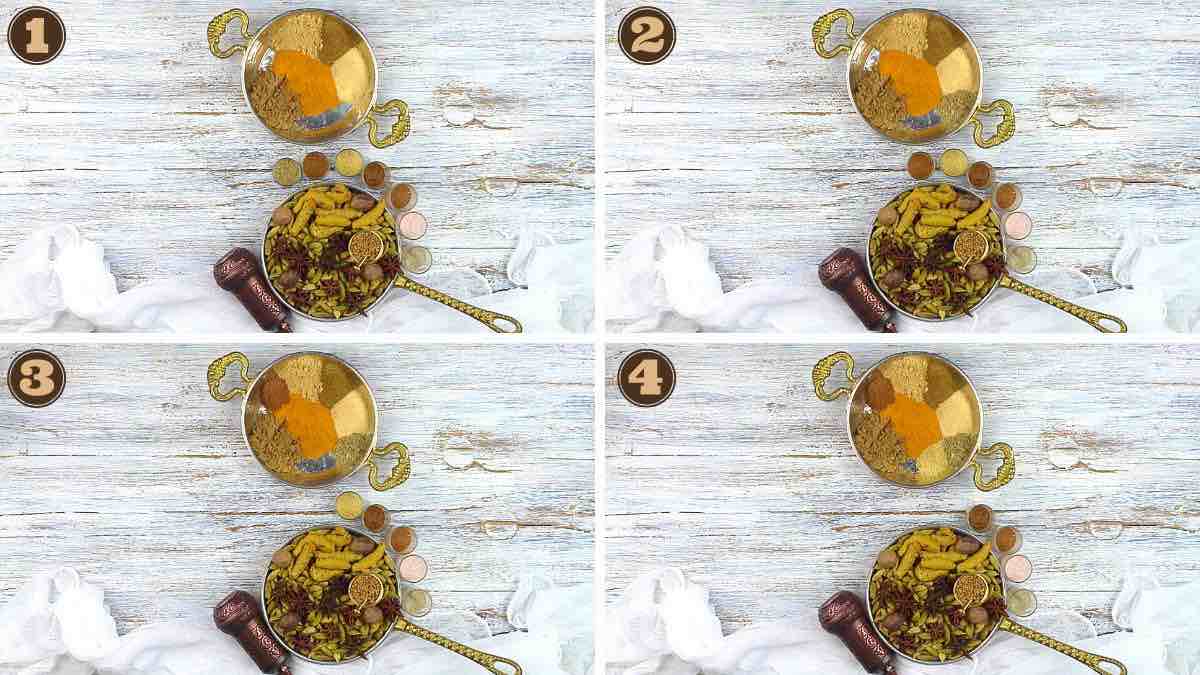
Fourth Step: Clove to pepper
Finish up by adding clove, cinnamon, salt, and black and white pepper.
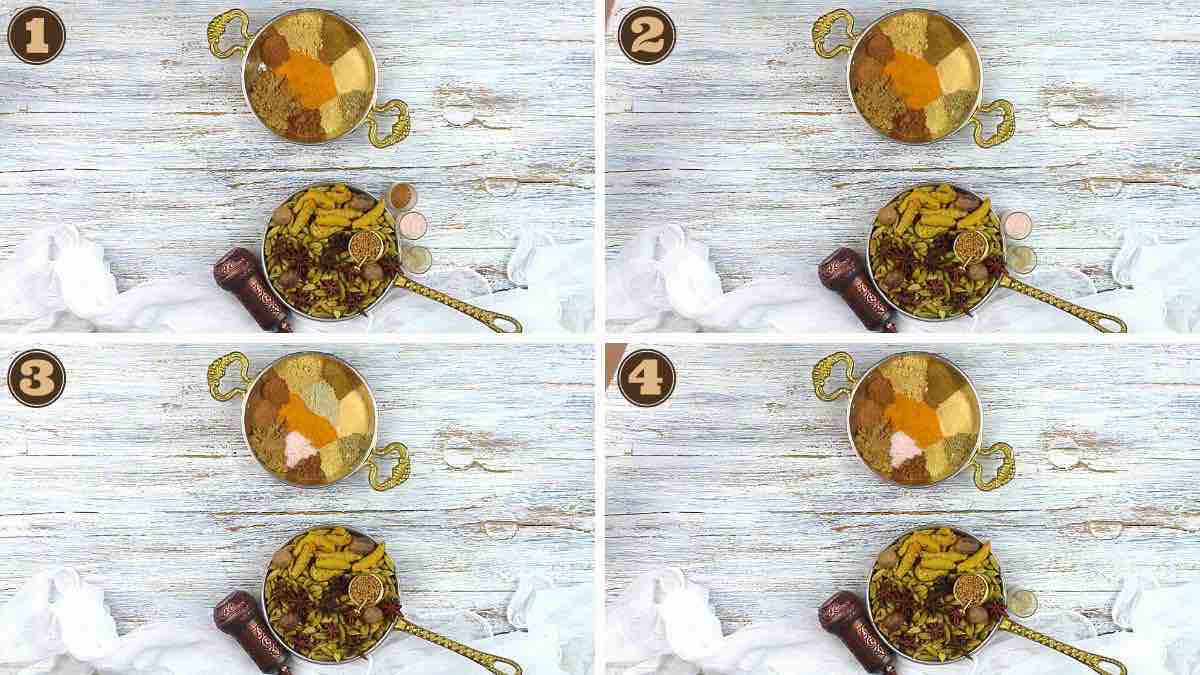
Fifth Step: Mix
Using a spoon, mix all ingredients. Keep mixing until all of the spices blend into one another.
Store in an airtight container and use.
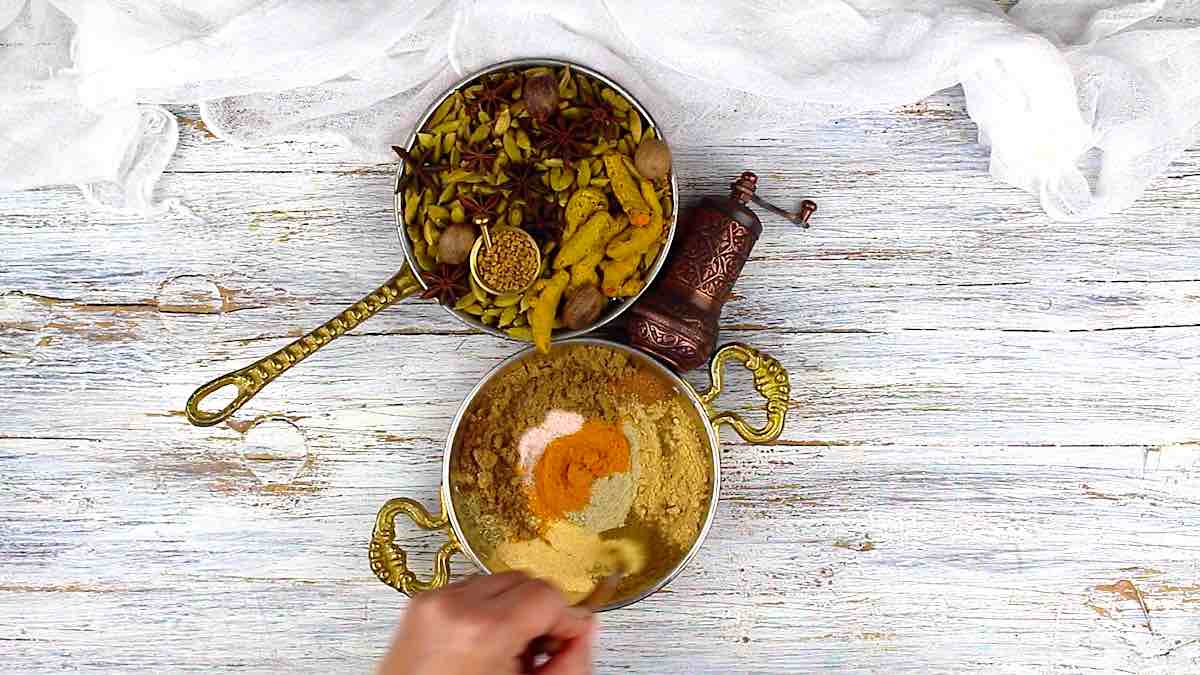
Tips for Making Mild Curry Powder Recipe
- Quality – try to get the best and freshest quality spices for your mixture.
- Turmeric – is one of the most important spices not only for its healthiness but the color a curry needs.
- Additions – if you have any additional spice you like and prefer, such as red chili powder, yellow mustard powder, sambar powder, mango powder, bay leaf powder, and cayenne pepper, please add that in as well.
- Spicy – you can control the heat of your curry powder by adding extra chili and cayenne.
FREQUENTLY ASKED QUESTIONS AND ANSWERS
How to use Curry Powder?
Curry powder is a great flavorful, and fragrant spice mix that adds flavor and color to many dishes. It can be added to all recipes that require curry powder, such as vegetables, meat like this ground beef and cabbage, air fryer chicken tikka, poultry, fish, and even desserts. To use curry powder, start by adding a small amount to your dish and tasting the flavor of curry powder before adding more. You may need to adjust the amount of curry powder mix according to the recipe you are using.
For example, in the recipe that calls for two teaspoons of curry powder to use, you may want to add only one teaspoon.
When cooking with curry powder, it is essential to remember that it can become bitter if overcooked or burned. Therefore, you should add the curry powder near the end of cooking or sprinkle it on top of the finished dishes just before serving.
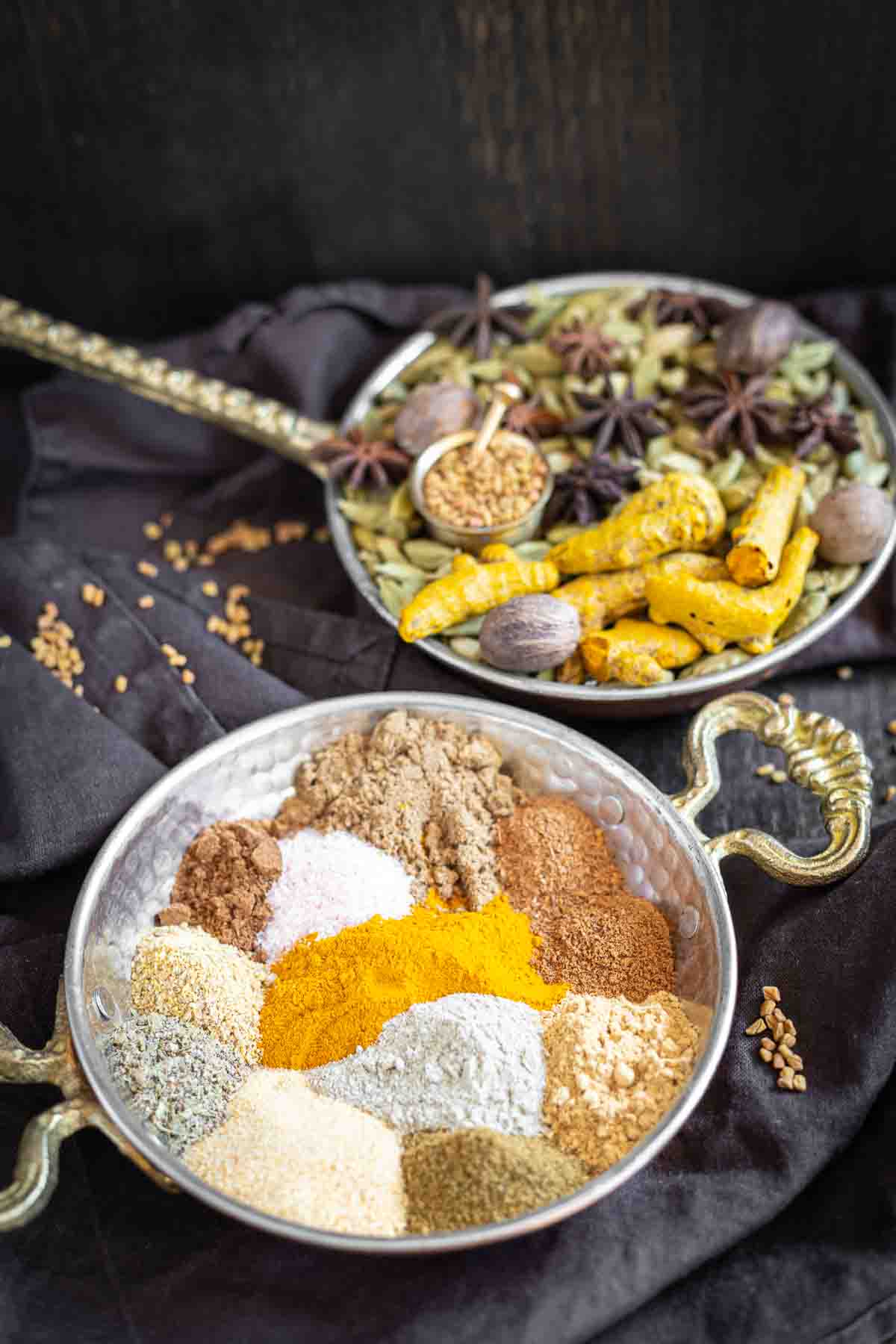
How To Make Curry Paste?
Making your curry paste is a great way to take control of the flavors in your cooking. Curry paste is made from a combination of ground spices and herbs blended with oil, such as coconut or vegetable oil.
You’ll want to gather all the ingredients you need for the recipe. This could include fresh garlic and ginger, cumin, coriander, turmeric, mustard seeds, fennel seeds, cardamom pods, cinnamon sticks, chilies, and lemongrass. Start by heating the oil in a pan over medium heat and adding all the spices and herbs. Stir for about five minutes until fragrant.
When everything is combined, transfer it to a food processor or blender and blend until it forms a smooth paste.
Once you’ve achieved the desired consistency, you can use it immediately or store it in an airtight container in the fridge for up to two weeks. With your homemade curry powder and curry paste, you’ll have complete control over flavor intensity and create delicious dishes every time.
Curry powder is an essential spice for many dishes, and it’s important to keep it correctly to maintain its flavor. The best way to store curry powder is in a dark, dry place away from direct sunlight and heat sources. Keep the container tightly sealed with a lid or other type of closure. You can also keep curry powder in the refrigerator if you plan on using it for an extended period.
If you store curry powder for more than one month, it is advised that you move the container to the freezer so that the spices will last longer and retain their flavor better. Additionally, avoid storing curry powder near other strong-smelling foods or spices, as this could affect the taste of your dish.
More Homemade Seasonings
Pin for later
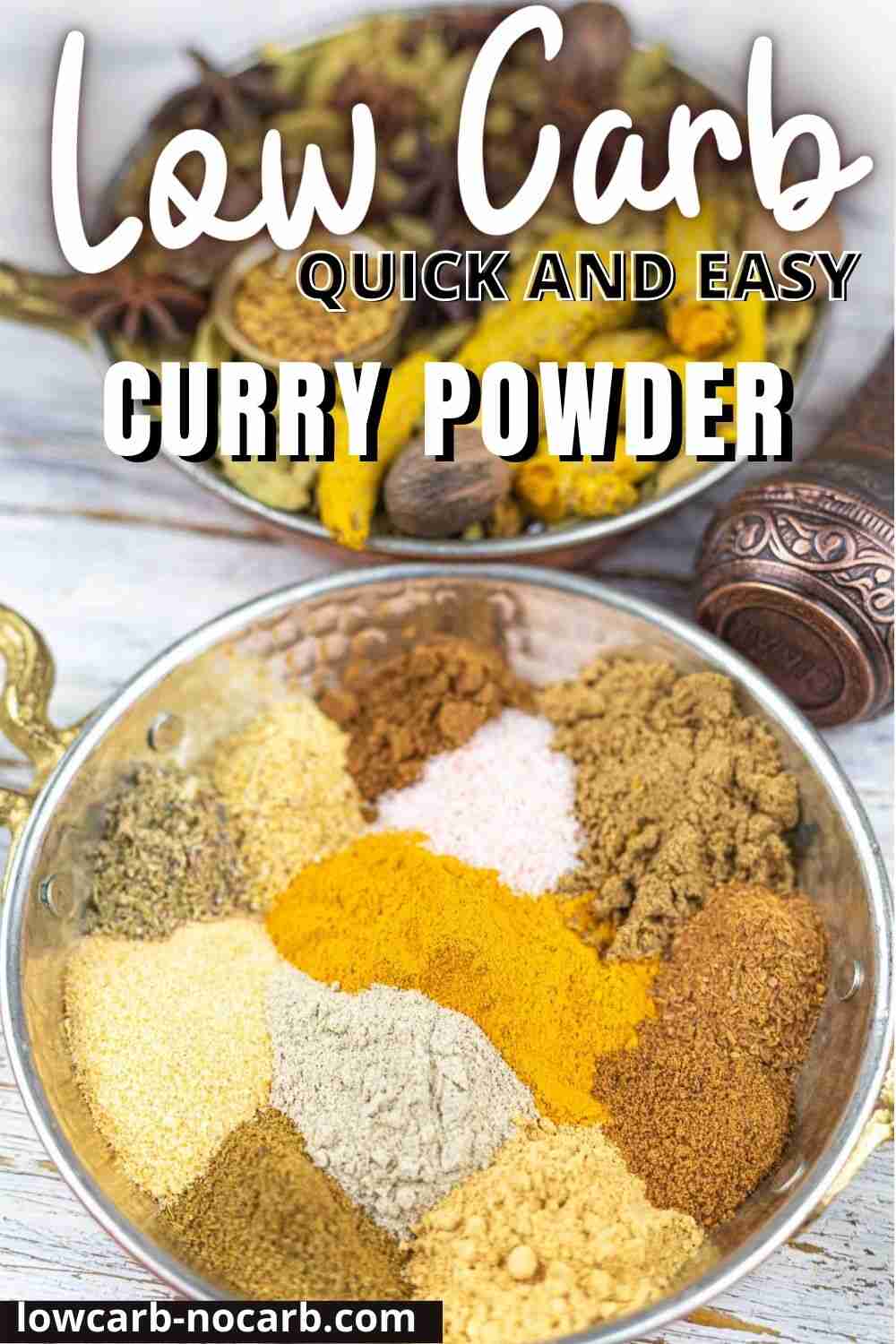
Need Support or have Questions? Join our Free Facebook Group.
Follow us on Pinterest, Facebook, Instagram, TikTok, Flipboard, or YouTube.
For weekly New Recipes and a FREE E-Book get into our NEWSLETTER.
Full Recipe with print out option
Thank you for giving us 5 stars
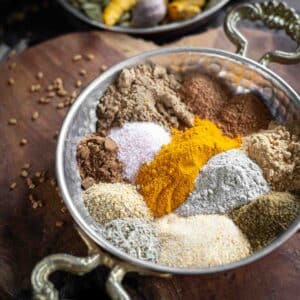
Substitute for Curry Powder Recipe
Equipment
Ingredients
- 2 Tablespoons Ground Turmeric
- 1 Tablespoon Ground Cumin
- 1 Tablespoon Ground Coriander
- 1 Tablespoon Garlic
- 1/2 Tablespoon Ground Ginger
- 1 Teaspoon Cardamon
- 1 Teaspoon Nutmeg
- 1 Teaspoon Fenugreek
- 1 teaspoon Clove
- 1 teaspoon Cinnamon
- 1 teaspoon Salt
- 1 teaspoon Ground black/white pepper
Instructions
- Prepare all of your spices. It would be best to have them all homegrown and dry and grind by you. But if not, try to get the freshest ingredients and as bio-quality as possible.
- Start with turmeric, which is one of the most important and gives you that beautiful color to the whole blend. Follow with garlic, ground cumin, and coriander.
- Continue with ginger, cardamom, nutmeg, and fenugreek.
- Finish up by adding clove, cinnamon, salt, and black and white pepper.
- Using a spoon, mix all ingredients. Keep mixing until all of the spices blend into one another.
Video
Notes
- Quality – try to get the best and freshest quality spices for your mixture.
- Turmeric – is one of the most important spices not only for its healthiness but the color a curry needs.
- Additions – if you have any additional spice you like and prefer, such as red chili powder, yellow mustard powder, sambar powder, mango powder, bay leaf powder, and cayenne pepper, please add that in as well.
- Spicy – you can control the heat of your curry powder by adding extra chili and cayenne.
Nutrition
Disclaimer
Please note that nutrient values are estimates only. Variations can occur due to product availability and manner of food preparation. Nutrition may vary based on methods of origin, preparation, freshness of ingredients, and other factors.
If you are still looking for some Low Carb products, visit our recommended site on Amazon, which we participate in as affiliates. Just click on the image below and all will be revealed.

Homemade Spices and Herbs
Make your own blends, seasonings, spices, and dried vegetables to ensure your keto pantry has everything it needs.
